#Guglielmo ii
Text
Antonio Vivaldi (1678-1741) - Trio Sonata for 2 Violins and Continuo in g-minor, Op. 5 No. 6, RV 72, II. Allemanda: Allegro. Performed by Federico Guglielmo/L'Arte dell'Arco on period instruments.
#antonio vivaldi#baroque#classical music#violin#violinist#period performance#period instruments#baroque music#trio sonata#baroque violin#vivaldi#organ#cello#chamber music#sonata
31 notes
·
View notes
Text
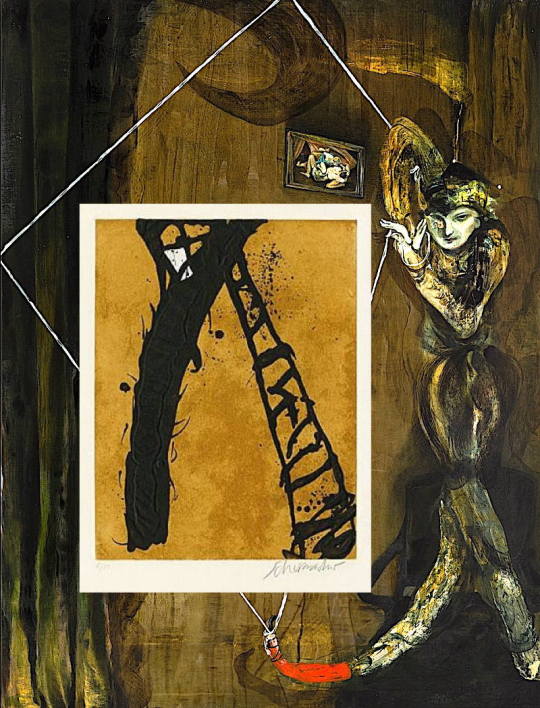
combi-art #01
guglielmo castelli: the minimum labyrinth, 2023
emil schumacher: gorim II, 1995
6 notes
·
View notes
Text
The Golden Age of Radio, ep. 01
Tesla did invent the wireless radio that he held a public demonstration in 1893, but an Italian inventor named Guglielmo Marconi believed communication could happen through radio waves using what he called “telegraphy without wires” and he proved it in 1865 by sending and receiving a radio signal by Morse code. His intention was to use wireless communication to contact ships and he wanted to broaden his reach by transmitting waves across the Atlantic on December 12, 1901. There are historians that say Marconi stole the radio from Tesla, but regardless, he did invent radio waves and he was the first to send communication which he is credited as the father of radio.
After much work to perfect wireless communication, ships were outfitted with radios that proved beneficial when sailing the seas. The Titanic used radio to send distress signals to nearby vessels for aid, and though too many passengers lost their lives, many were indeed saved.
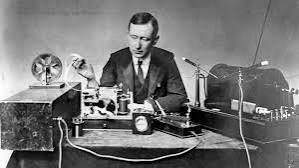
Marconi revolutionized radio communications. The first recorded radio broadcast happened in 1906 on Christmas Eve. Canadian Reginald Fessenden, also named father of radio, worked with Edison in New Jersey for years to improve radio waves by transmitting sound like human voices and he proved it accomplishable with the first audible broadcast on Christmas Eve. Fessenden introduced the small ensemble playing Christmas tunes and he would end the show, “Goodnight to all.”
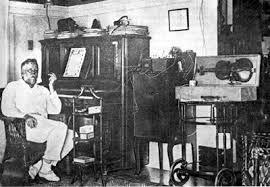

January 13, 1910 was the first live public broadcast from the Metropolitan Opera House in New York. Radio communication proved effective in World War I, but a decade later in 1920 marked a historical event when Pittsburgh station KDKA aired the first commercial broadcast in America on Election Day, November 2, to announce the results of the Harding and Cox. The success of the broadcast inspired other stations to start their own broadcast programs, and thus, this paved the road for the Golden Age of Radio in America.
In the 1920’s, From 1930 through to the 1940’s commercial radio programs aired with programs that entertained families in the privacy of their homes. The function of radios wasn’t limited to homes, but also on battlefields, in the air, and on the seas in both World Wars I and II.
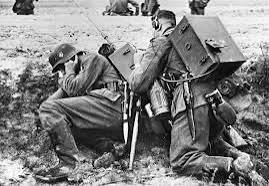

Radio programs allowed its audiences to visualize performances and favorites brought families together to enjoy their favorites: The Jack Benny Program, Amos ‘n’ Andy, Dick Tracy, Burns and Allen… a few of so many. RCA - later became NBC, CBS, and ABC were the biggest networks that contracted celebrities and their sponsors that were recorded in New York City or Hollywood. During the birth of television, shows would move from NYC to Hollywood as programs started to converge over from sound to sight.
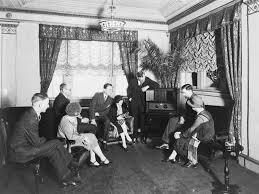
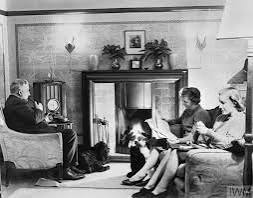
If ever you get an opportunity to listen to a radio program, do so with an open mind. You’ll be amazed between the difference. Until next time… aloha oe.
Photos: *BBC, Britannica, The Canadian Encyclopedia, Wikipedia, Getty Images
#movie talk#movie time#old time radio#review#1950s#1930s#1920s#hollywood history#reviews#1940s#old hollywood#golden age#golden hour#entertainment#inventions#history#historical
8 notes
·
View notes
Text

This miniature shows Prince Albert dressed in Windsor uniform with the badge of the Order of the Golden Fleece. Prince Albert's appearance suggests a date of c.1859 – 60 and the miniature may perhaps relate to a payment of 10 guineas to Guglielmo Faija for a '[Miniature of the] Prince Consort' in June 1860. However, it wasn’t recorded in the Royal Collection until the reign of HM Queen Elizabeth II
20 notes
·
View notes
Text
L’#ALMANACCO DEL GIORNO
Il 10 Settembre, nel possibile anniversario della sua morte ad Evesham, in veneranda età, si ricorda Lady Godiva (990-1086?), — nome latinizzato dell'anglosassone Godgifu, cioè "dono del Signore" — vedova del conte Leofrico di Mercia (968-1057).
I. LA LEGGENDA
Secondo la tradizione popolare, in gioventù la bellissima Godiva aveva preso a cuore il destino della popolazione di Coventry, che pativa le tasse oppressive imposte dal conte suo marito. La contessa gli aveva chiesto più volte di ridurle, ma il marito aveva sempre rifiutato, finché — stanco delle sue suppliche — le aveva scherzosamente garantito che, se avesse cavalcato nuda nelle vie della città, avrebbe dato ascolto alla sua richiesta. La buona contessa, prese invece alla lettera le sue parole, aveva cavalcato nuda per le vie di Coventry.
II. ALTRE VERSIONI
Secondo una versione del XIII Secolo della storia, ella aveva attraversato la città durante il mercato, sotto gli occhi di tutti, scortata da due guardie.
Versioni successive della leggenda avrebbero invece riferito che il conte avrebbe emesso proclama dove si ordinava a tutti di chiudersi in casa, tenendo chiuse porte e finestre, mentre i lunghi capelli della contessa l'avrebbero coperta come un vestito. Soltanto una persona in città, un sarto detto Peeping Tom, avrebbe disobbedito, praticando un foro in una persiana per poter vedere il passaggio di Godiva, ma rimanendone cieco.
In ogni caso, alla fine, il conte aveva mantenuto la sua parola e abolito le tasse più onerose.
III. LA VECCHIAIA
Secondo quanto riportato nel "Domesday Book", una sorta di registro censorio voluto nel 1085 dal nuovo Re d'Inghilterra Guglielmo I il Conquistatore (1022-1087), sembrerebbe che Lady Godiva fosse tra i pochi anglosassoni e l'unica donna a rimanere un'importante proprietaria terriera anche dopo la conquista normanna del 1066.
IV. LE FONTI PRIMARIE
Oltre al citato "Domesday Book", le principali fonti primarie sulla vita di Lady Godiva sono il "Chronicon ex chronicis" di Fiorenzo di Worchester (†1118), i "Flores Historiarum" di Ruggero di Wendover (†1236) e le "Chronica majora" di Matteo di Parigi (1200-1259).
V. I TESTI CONSULTATI
Per la redazione di questo articolo sono state consultate varie fonti, tra cui si menzionano la voce "Lady Godiva" dell'Enciclopedia "Britannica", "Countess Godiva", di Cecilia Parsons, "The historical Godiva", di Octavia Randolph, e la voce "Lady Godiva" della "Encyclopædia Romana" di James Grout.
------
[Nell'immagine: Lady Godiva in un dipinto del pittore inglese John Collier (1850-1934)]
------
#storia #Medioevo #feudalesimo #almanacco1009
#LadyGodiva #LeofricoDiMercia #PeepingTom #Godiva #Leofrico #Mercia #Coventry

6 notes
·
View notes
Text
youtube
Giovanni Benedetto Platti (1697-1763) - Harpsichord Concerto in C Major, IP 48: II. Adagio
Artist: Roberto Loreggian
Orchestra: L'Arte Dell'Arco, Conductor: Federico Guglielmo
4 notes
·
View notes
Text
Ages of Medici Women at First Marriage
I have only included women whose birth dates and dates of marriage are known within at least 1-2 years, therefore, this is not a comprehensive list.
This list is composed of Medici women from 1386 to 1691 CE; 38 women in total.
Piccarda Bueria, wife of Giovanni di Bicci de’ Medici: age 18 when she married Giovanni in 1386 CE
Contessina de’ Bardi, wife of Cosimo de’ Medici: age 25 when she married Cosimo in 1415 CE
Lucrezia Tornabuoni, wife of Piero di Cosimo de’ Medici: age 17 when she married Piero in 1444 CE
Bianca de’ Medici, daughter of Piero di Cosimo de’ Medici: age 14 when she married Guglielmo de’ Pazzi in 1459 CE
Lucrezia de’ Medici, daughter of Piero di Cosimo de’ Medici: age 13 when she married Bernardo Rucellai in 1461 CE
Clarice Orsini, wife of Lorenzo de’ Medici: age 16 when she married Lorenzo in 1469 CE
Caterina Sforza, wife of Giovanni de' Medici il Popolano: age 10 when she married Girolamo Riario in 1473 CE
Semiramide Appiano, wife of Lorenzo di Pierfrancesco de' Medici: age 18 when she married Lorenzo in 1482 C
Lucrezia de’ Medici, daughter of Lorenzo de’ Medici: age 18 when she married Jacopo Salviati in 1488 CE
Alfonsina Orsini, wife of Piero di Lorenzo de’ Medici: age 16 when she married Piero in 1488 CE
Maddalena de’ Medici, daughter of Lorenzo de’ Medici: age 15 when she married Franceschetto Cybo in 1488 CE
Contessina de’ Medici, daughter of Lorenzo de’ Medici: age 16 when she married Piero Ridolfi in 1494 CE
Clarice de’ Medici, daughter of Piero di Lorenzo de’ Medici: age 19 when she married Filippo Strozzi the Younger in 1508 CE
Filberta of Savoy, wife of Giuliano de’ Medici: age 17 when she married Giuliano in 1515 CE
Madeleine de La Tour d’Auvergne, wife of Lorenzo II de’ Medici: age 20 when she married Lorenzo in 1518 CE
Catherine de’ Medici, daughter of Lorenzo II de’ Medici: age 14 when she married Henry II of France in 1533 CE
Margaret of Parma, wife of Alessandro de’ Medici: age 13 when she married Alessandro in 1536 CE
Eleanor of Toledo, wife of Cosimo I de’ Medici: age 17 when she married Cosimo in 1539 CE
Giulia de’ Medici, daughter of Alessandro de’ Medici: age 15 when she married Francesco Cantelmo in 1550 CE
Isabella de’ Medici, daughter of Cosimo I de’ Medici: age 16 when she married Paolo Giordano I Orsini in 1558 CE
Lucrezia de’ Medici, daughter of Cosimo I de’ Medici: age 13 when she married Alfonso II d’Este in 1558 CE
Bianca Cappello, wife of Francesco I de’ Medici: age 15 when she married Pietro Bonaventuri in 1563 CE
Joanna of Austria, wife of Francesco I de’ Medici: age 18 when she married Francesco in 1565 CE
Camilla Martelli, wife of Cosimo I de’ Medici: age 25 when she married Cosimo in 1570 CE
Eleanor de’ Medici, daughter of Francesco I de’ Medici: age 17 when she married Vincenzo I Gonzaga in 1584 CE
Virginia de’ Medici, daughter of Cosimo I de’ Medici: age 18 when she married Cesare d’Este in 1586 CE
Christina of Lorraine, wife of Ferdinando I de’ Medici: age 24 when she married Ferdinando in 1589 CE
Marie de’ Medici, daughter of Francesco I de’ Medici: age 25 when she married Henry IV of France in 1600 CE
Maria Maddalena of Austria, wife of Cosimo II de’ Medici: age 19 when she married Cosimo in 1608 CE
Caterina de’ Medici, daughter of Ferdinando I de’ Medici: age 24 when she married Ferdinando Gonzago in 1617 CE
Claudia de’ Medici, daughter of Ferdinando I de’ Medici: age 16 when she married Federico Ubaldo della Rovere in 1620 CE
Margherita de’ Medici, daughter of Cosimo II de’ Medici: age 16 when she married Odoardo Farnese in 1628 CE
Vittoria della Rovere, wife of Ferdinando II de’ Medici: age 12 when she married Ferdinando in 1634 CE
Anna de’ Medici, daughter of Cosimo II de’ Medici: age 30 when she married Ferdinand Charles of Austria in 1646 CE
Marguerite Louise d’Orleans, wife of Cosimo III de’ Medici: age 16 when she married Cosimo in 1661 CE
Violante Beatrice of Bavaria, wife of Ferdinando de’ Medici: age 16 when she married Ferdinando in 1689 CE
Anna Maria Franziska of Saxe-Lauenberg, wife of Gian Gastone de’ Medici: age 18 when she married Philipp Wilhelm of Neuberg in 1690 CE
Anna Maria Luisa de’ Medici, daughter of Cosimo III de’ Medici: age 24 when she married Johann Wilhelm, Elector Palatine in 1691 CE
The average age at first marriage among these women was 17 years old.
6 notes
·
View notes
Photo

“Camicia Nera” Guglielmo Sansoni a.k.a. Tato c.1932
Poster design depicting the March on Rome, also used as the cover for Gioventu Fascista (Fascist Youth), Year II, N. 3 - January 30th issue.
#poster#painting#futurism#italy#italia#fascism#partito nazionale fascista#march on rome#marcia su roma#tato#guglielmo sansoni#gioventu fascista
19 notes
·
View notes
Text
Crisp & Wet Fall Companion Mixes

traveling on a perfect crisp autumn day
It's the sound of autumn leaves rattling against a bright blue sky. Where the warmth of the sun on your skin meets a brisk breeze. You're glad you packed your favorite cardigan.
Tracklist:
George Harrison - Greasy Legs
Elori Saxl - Moss II
C. Bear, D. Rossen - You Gain Something Too
Brendan Eder Ensemble - Pure (Ride the World)
Group Listening - A Little Lost
Misha Panfilov Sound Combo - Together
Slapp Happy - Sort Of
Technoself, Deantoni Parks - CANT SQUARE DANCE
Black Taffy - Riding Day
Mirabel Lomer - Study in F - Original
Duval Timothy - Pleats
Charles Stepney - Daddy's Diddies
Roger Webb - Bartleby 2
Hailu Mergia - Tezeta
Richard Pinhas - XXXXX: "La Ville Sans Nom"
Haruomi Hosono - Philharmony
The Focus Group - Hocusing loe
Ernest Hood - Warm Pathways
Bibio - Zoopraxiphone
Flaer - Follow
Nelson Riddle - Theme from The Proud Ones
Penguin Cafe Orchestra - Telephone And Rubber Band
The Durutti Column - Response
Woo - A Frog's Fandango
C418 - Subwoofer Lullaby
Carl Stone - Wat Dong Moon Lek
Jonny Greenwood - House of Woodcock

rain blowing sideways through the golden leaves clinging to trees while you read beside the window
Fall has lost its hold on summer. What was crisp has now become wet. Night falls earlier swiftly. You escape inside and into a book.
Tracklist:
Tara Clerkin Trio - In The Room
Jacqueline Humbert & David Rosenboom - How Much Better If Plymouth Rock Had Landed On the Pilgrims (Excerpt)
Henry Hall & The Gleneagles Hotel Band - Home
The Melachrino Strings - Mattinata
Tariverdiev - Sun in Rain
Claude Vasori - Folk Guitar
Ennio Morricone - L'assoluto naturale
Guglielmo Papararo & Vittorio Montis - Jonosfera
The Caretaker - Increasingly absorbed in his own World
Shela - João João
Yasuaki Shimizu - Cello Suite No. 4 Prelude
Michael Gordon & The Crossing - I Sleep at Home
ACME - In manus tuas
Haron - Maangerij
Oliver Coates - Butoh baby
Laurel Halo - Rome Theme III
Rat Heart - CJHK
ROMANCE - I Hear A Symphony
Broadcast - Chord Simple
Josiah Steinbrick - Tomorrow
BOHREN & DER CLUB OF GORE - Karin
Bernard Hermann - Thank God for the Rain
Arne Domnerus/Gustaf Sjokvist - Antiphone Blues
Ennio Morricone - All Night Club
2 notes
·
View notes
Text
Navesink Lighthouse
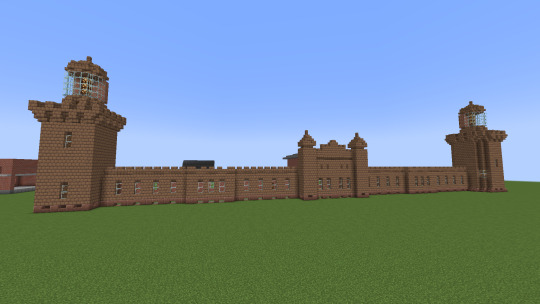
The Navesink Lighthouse, also called the Navesink Twin Lights, is a non-operational lighthouse and museum located in Monmouth County, New Jersey.

The current lighthouse structure was built in 1862, however there have been a pair beacons on the Highlands of Navesink since 1828. The castle-like construction possesses both a northern octagonal tower and a southern square tower. The large building in the middle served as the primary keepers quarters with additional quarters for assistant keepers in the wings attaching the towers. Navesink was the first lighthouse in the U.S. to be installed with Fresnel Lenses, making it the most powerful light in the country at the time.

During the 1893 World's Columbia Exposition in Chicago the French Lighthouse board convinced the U.S. to purchase an electric powered bivalve lens. The lens was eventually installed at Navesink and in its south tower where it produced 25,000,000 candlepower as opposed to the original Fresnel lens' 8,000 candlepower. It was so powerful the not only did its keepers require special eye protection to work near it, but also disturb the nearby locals and their livestock. In addition, the northern tower was decommissioned in 1898 as the new lens had overpowered it into uselessness.

A number of other firsts have occurred at the light over its history. In 1899, Guglielmo Marconi erected the antenna mast of the first wireless telegraph in the United States for sending and receiving messages on a regular commercial basis. The first experimental radio beacon was established near the lighthouse in 1917, and just before World War II the first experiments in radar were conducted in the shadow of the north tower.

The light would finally be extinguished in 1949, and two years after its' impressive bivalve lens would be bought and displayed in the Boston Museum of Science. Navesink light would eventually be truned over to the State of New Jersey in 1962 and converted into a state park and museum. The bivalve lens would actually be returned to Navesink in 1979 where it now resides in the light's historic brick generator building.
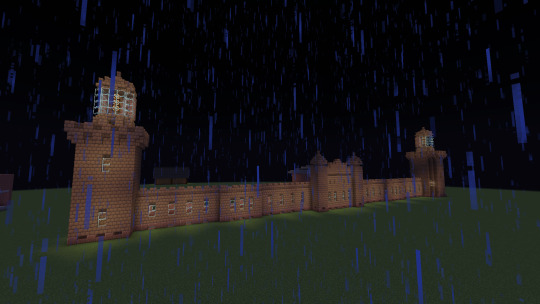
LighthouseFriends.com
Wikipedia

20 notes
·
View notes
Text
Giovanni Meneghetti (1730-94) - Sonata for Violin and Basso continuo in b-minor, II. Allegro [in D-Major]. Performed by Giovanni Guglielmo, violin, and Archicembalo Ensemble on period instruments.
#giovanni meneghetti#classicism#classical music#violin#violinist#period performance#period instruments#rarely performed composers#violin sonata#sonata#chamber music#strings
32 notes
·
View notes
Photo

And yet Heaven’s providential intervention stepped in; since the still free mind of Prince Don Cesare couldn’t grasp a greater gift was yet to come. And this bird-catcher fooled by hope, instead of an escaped dove, managed to catch a Phoenyx. This was indeed Donna Luisa di Luna e Vega, daughter of Pietro Duke of Bivona, who by marrying Don Cesare, not only brought to her husband’s House her father’s Duchy, and the lands of the House of Peralta, already englobed by those of de Luna’s, but then with the marriages of her son and grandson, poured in the Moncada’s possessions, the titles and riches of two other illustrious lineages, that of Aragona and Cardona, with the Duchy of Montalto and the County of Collesano.
Hence, like that Arabian bird, which it is obsequiously followed by other birds wherever it flies, likewise she brought with her a magnificent procession of many estates in the House where she nested.
Giovanni Agostino della Lengueglia, Ritratti della prosapia et heroi Moncadi nella Sicilia: opera historica-encomiastica, p.559-560 [my translation]
Aloisia (or Luisa) was born in Bivona (nearby Agrigento) around 1553. She was the firstborn of Pietro Giulio de Luna Salviati, Duke of Bivona, Earl of Caltabellotta and of Sclafani, and his first wife, the Spanish Doña Isabel de Vega y Osório. The baby girl was named after her paternal grandmother, Luisa Salviati de' Medici. In fact, through her father, Aloisia descended from Lorenzo il Magnifico de' Medici, who was her great-great-grandfather. On her mother’s side, on the other hand, she was the granddaughter of Juan de Vega y Enriquez, who had been Viceroy of Navarre and later of Sicily (also the one who brought Jesuits in Sicily). Aloisia had two younger sisters, Bianca and Eleonora, and a half-brother, Giovanni, born in 1563, out of Pietro's second marriage to Ángela de la Cerda y Manuel, daughter of Juan de la Cerda, IV Duke of Medinaceli and Viceroy of Sicily from 1557 to 1564.
In 1568, Aloisia married Cesare Moncada Pignatelli, Prince of Paternò, Earl of Adernò and of Caltanissetta, a decade older than her, in Caltabellotta. The union between the two had been planned by Juan de la Cerda, the bride's step-grandfather. Cesare was indeed supposed to marry his cousin, Giovanna de Marinis (daughter of his aunt Stefania), but marriages between noble families were delicate matters and needed the Viceroy's approval as well as (sometimes) the Papal dispensation in case of seventh grade parentage. The Moncadas were an incredibly wealthy and noble family. They owed their fortune mainly to Guglielmo Raimondo Moncada Earl of Agosta who, in 1379, had kidnapped Queen Maria I of Sicily and brought her to Spain where she married her cousin Martino. To thank him for his support, King Pedro IV of Aragon (the Queen’s maternal grandfather) had named Guglielmo Raimondo Royal Counselor and Justiciar of the Kingdom of Sicily. From 1565, the Moncadas were able to add to their titles that of Princes of Paternò, plus managed to exchange Augusta for Caltanissetta, thus saving tons of money since Augusta, differently from Caltanissetta, was a maritime city, which was often the victim of pirates’ raidings and needed to be constantly defenced (which entailed great expenses). De la Cerda used his influence to mess up the Moncadas’ original wedding plans (angering thus the groom’s family) and proposed the union with the de Luna, with whom the Moncadas were distantly related and therefore had needed the Pope’s blessing.
Aloisia would give birth to two children: Isabella (who would die an infant) and Francesco (ca. 1569-1592). Her marital life would be cut short as Cesare would suddenly die in Paternò on July 30th 1571, after only three years of marriage.
Little Francesco, now Francesco II, would be officially appointed of his late father’s titles the following year and placed under the guardianship of his maternal grandfather, Pietro de Luna, and his paternal uncle, Fabrizio Moncada (first husband of famous portrait painter Sofonisba Anguissola). Seven years later, Fabrizio would die in a pirate attack off the coast near Capri and some would talk about it not being an accident and about rumours of Fabrizio being headed to Spain to denounce his sister-in-law’s meddlings in the management of the Moncada’s patrimony.
Gossipers aside, it’s documented Aloisia took personal care in the education of her son and short-lived daughter. She began Francesco to study law, philosophy, literature and maths, as well as more artistic subjects like painting and sculpting.
Aloisia was the one who actively ruled over her son’s lands, showing a great deal of resourcefulness and managerial skills. Holding steady in her mind the idea of strengthening her (and by result her son’s) position, on September 17th, 1577, in Monreale, she married Antonio d’Aragona Cardona, Duke of Montalto and himself a widower. By concession of the Viceroy Marcantonio II Colonna, Aloisia obtained to keep acting as her son’s guardian without having to cede the role to her new husband or someone else.
Antonio d’Aragona too belonged to a prominent family, being a grandson of Ferrante d’Aragona Guardato, founder of the Line of the Dukes of Montalto and illegitimate child of Ferdinando I of Naples. Antonio’s first wife had been María de la Cerda y Manuel de Portugal, daughter of Juan de la Cerda y Silva, 4th Duke of Medinaceli as well as a Grandee of Spain, Viceroy of Sicily and Viceroy of Navarre during his long political career. From his first marriage, only his daughter Maria had reached adulthood as little Ferdinando died as an infant.
Aloisia bore Antonio a daughter, Bianca Antonia, who would later marry Giuseppe Ventimiglia Ventimiglia, II Prince of Castelbuono and IX Marquis of Geraci, and be the mother of Francesco III Ventimiglia d’Aragona, who would be offered (but not accept) the Crown of the Kingdom of Sicily during the anti-Spanish revolt of 1647.
The Duke of Montalto died in Naples on February 8th, 1584, on the route to quell a riot in the Flanders (the so called Dutch War of Independence) by virtue of his role of Captain General of the Spanish Cavalry in the Flanders. Leaving no male heir, all his titles and possessions passed to his eldest daughter, Maria.
Aloisia didn’t lose time to grieve for her husband as she swiftly arranged the marriage between her son Francesco and her step-daughter, the new Duchess of Montalto. The wedding took place on March 12th 1585 and the following year Francesco received maritali nomine the endowment of the Duchy of Montalto the Earldom of Collesano and all the lands owned by his wife’s family, bringing the total to thirteen of the fiefs owned by the Moncada.
On August 1592, Aloisia’s half-brother, Giovanni died childless, so as his eldest sister and heir, on September 30th she was endowed of the baronies of Scillato and Regaleali. She also inherited many fiefs in the area of Caltavuturo and Sclafani. From her court in Caltanissetta, she kept cleverly administering her possessions as well as the lands acquired through both of her late husbands (she generally rented her lands to foreigners, mostly Genoese and Pisans). She invited the Jesuits in Caltanissetta, had many churches and religious centre of the area built, she restored the city’s Cathedral. Aloisia took particular interest in having the Moncada’s libri di famiglia (books used to register one family’s commercial activity as well as key events in the lives of its family members, particularly common from XIII to XVI century) perfectly catalogued and maintained. She introduced and commissioned many artists and was perhaps the one who called back her sister-in-law Sofonisba Anguissola who, at that time, lived in Genova with her second husband, and who starting 1615 returned in Sicily where she would die.
Those who visited her, were rendered almost speechless about the magnificence of her court. During a visit in 1598 of the Viceroy and Vicereine, Bernardino de Cárdenas y Portugal and his wife Luisa Manrique de Lara, the Duchess had, in that occasion, surpassed herself. Aloisia had, in fact, arranged the area where she would receive her guests (at her own expenses), the forest of Mimiani, so perfectly and with so many tents, one would have thought you were in an actual city. Her guests were so pleased, the Vicereine gifted her of a splint of the Holy Cross kept in a display case ornated by precious stones.
Aloisia was also particularly generous. She did a lot of charity (and passed on the same generous disposition to her son and grandson), but made it through the nuns, ordering them to keep quiet about her being the one who sent the money, so that people would rather thank the Heaven for the celestial gift. She must have thought that public displays of charity didn’t have as an aim to help people, but rather that some benefactors did it for themselves since they took pleasure to hear their names be acclaimed for their generosity. During a terrible famine, when poor people were so hungry they ate grass and pasture, she used her personal income to provide for her people, so that at that time in her lands mortality rate was very low. She was also particularly mindful to guarantee that poor girls wouldn’t find themselves forced by misery to undertake a dishonourable life, granting them means to do honourable marriages. On the other hand, the Duchess didn’t skirt from regularly sending generous gifts to ministers and potentates, so that when at the right time, she could count on their support.
On May 23rd, 1592, a 23 year-old Francesco II Moncada died of malaria in Adernò (nearby Catania). Although it must have been extremely heartbreaking to lose her beloved son, Aloisia braced herself and took on the task of properly raising, together with her daughter-in-law, her 4 years-old grandson, Antonio. Since the child was also Donna Maria’s heir, in accordance with his parents’ marriage settlements, it had been stipulated he would take as first his mother’s surname and be styled as Antonio II d’Aragona Moncada de Luna.
The little Prince grew up together with his younger brother Cesare (the other brother, Giovanni, had died a child) in his family’s palace in Caltanissetta, closely watched over by their grandmother and mother (although, at ten, he seriously risked drowning in a cistern, while playing with his brother, and was saved thanks to Cesare’s cries for help which alerted Aloisia and Maria). From a young age, Antonio had been betrothed to Juana de la Cerda y de la Cueva, daughter of Juan de la Cerda, VI Duke of Medinaceli and his first wife Ana de la Cueva and at that time her father’s only heir.
The Duke of Medinaceli was in particular eager to have this marriage celebrated and already thought of Antonio as a son of his own. Since the young Moncada kept delaying his journey to Spain in order to marry, the Duke of Medinaceli somewhat grew tired and got married a second time (although he hadn’t thought of remarrying previously). Unfortunately for Juana, her step-mother, Antonia de Toledo Dávila y Colonna, would in 1607 give birth to a son, Antonio Juan Luis, who would surpass his sister and would one day inherit their father’s titles and possessions.
Although, understandably, organising a quasi-royal marriage all the way to Spain, complete with a long voyage to reach it, was indeed a big and long deal, that missed chance was perhaps Aloisia’s only mistake. If only they had moved faster, and Juana had succeeded her father, Moncada’s riches might have reached legendary status.
The delay was due to the fact that the old Duchess had also insisted to travel to Spain, accompanied by her daughter-in-law, Maria, and her two young granddaughters, Isabella and Luisa, with the hope of finding suitable matches for the girls among the Spanish aristocracy, and for that every aspect of the journey had to be perfect (Isabella would die young, while Louisa would marry in 1612 Eugenio de Padilla Manrique, III Count of Gadea). The Moncadas had to arrive in Spain with the pomp and grandeur (Aloisia must have thought) they deserved. Worryngly, as they reached Naples and stopped for a break, the groom grew sick and had to be treated by the best doctors before he could resume the voyage.
The marriage between Antonio Moncada and Juana de la Cerda took place in 1607 and it seems like it was a successful union, with the couple living harmoniously together in Spain for the first years, then settling in Collesano, near Palermo and part of Antonio’s possessions. While in Spain, the new Duchess gave birth to a son, Francesco, in 1613, who would be followed by Sicilian born Luigi Guglielmo (1614), Marianna (1616), and Ignazio (1619).
In 1610, Maria d’Aragona de la Cerda, Dowager Princess of Paternò died, leaving her mother-in-law Aloisia as the sole matriarch of the family.
In 1626, the young Francesco, Antonio II’s heir, would feel ill and die (and his siblings almost followed him) while both of his parents were in Spain to attend their courtly duties. Full of pain and regrets, Antonio and Juana would obtain the dissolution of their marriage and they both would take the cloth, becoming one a Jesuit and the other an Augustinian nun. Following his father’s resignation, 13 years-old Luigi Guglielmo became the new Prince and head of the Moncada family.
But Donna Aloisia would be spared of these sorrows as she died in Palermo in 1620, at 67. She would be buried in her Caltanissetta, in the Church of Santa Maria Assunta, which would be turned into a hospital in the XIX century, and which already housed the grave of her son Francesco II.
Sources
Antognelli Enrica, LUISA MONCADA Una Grande Donna del Rinascimento Siciliano
De la Cerda. Duques de Medinaceli
della Lengueglia Giovanni Agostino, Ritratti della prosapia et heroi Moncadi nella Sicilia: opera historica-encomiastica, p.557- 672
Le foto che raccontano il passato di Bivona
Palumbo Valeria, La Sicilia celebra la potentissima Aloisia de Luna Vega
Silva Alfonso Franco, EL DUCADO DE MONTALTO - NOTAS SOBRE LOS SEÑORIOS ITALIANOS DE MEDINA SIDONIA
Storia e Arte
#women#history#historicwomendaily#historical women#women in history#aloisia de luna vega#House of Moncada#House De Luna#caltanissetta#province of caltanissetta#aragonese-spanish sicily#people of sicily#women of sicily#myedit#historyedit#Francesco II Moncada de Luna#Antonio II d'Aragona Moncada
21 notes
·
View notes
Text
Today In History: June 02

A bit of June 2nd history…
455 - King Gaiseric and the Vandals sack Rome.
1774 - Intolerable Acts - amendment to original Quartering Act enabled
1875 - Alexander Graham Bell makes 1st sound transmission
1896 - Guglielmo Marconi applies to patent the radio - accepted 2 July 1897
1904 - Professor Schron finds microbe that causes photosynthesis
1924 - US President Coolidge signs the Indian Citizenship Act declaring all North American Indian Tribal members to be U.S. Citizens (pictured)
1953 - Coronation of Queen Elizabeth II
1979 - Los Angeles Mayor Tom Bradley signs 1st homosexual rights bill
1 note
·
View note
Text
Control: Revolutionizing the Way We Operate Devices
wireless remoteIn today's fast-paced world, control technology has become an integral part of our lives. From governing our television sets to operating drones and even controlling our home appliances, controls have revolutionized the way we interact with devices. This article will delve into the intricacies of control systems, exploring their history, functionality, applications, advantages, and future prospects.For more information, welcome to visit wireless remote,https://remotecontrolcn.com/product-category/remote-controls-products/remote-controller/wireless-remote-controller We areaprofessional enterprise platform in the field, welcome your attention and understanding!
I. Evolution of Control Systems:
The inception of control systems dates back to the early 20th century. It all started with the development of the radio waves by Guglielmo Marconi. This laid the foundation for the first ever control, which was primarily used for military purposes during World War I. As technology advanced, so did the remote control systems, transitioning from infrared to radio frequency-based transmission.
II. How Does Control Work?
controls operate on the principle of transmitting signals through the air, allowing them to communicate with a receiver device. The transmitter, typically in the form of a handheld unit, sends signals in the form of electromagnetic waves. These signals are then picked up by a receiver device, which interprets the commands and triggers the corresponding action. The advancements in wireless technology have significantly enhanced the reliability and range of controls, enabling them to operate from larger distances and even through obstacles.
III. Applications of Control:
1. Home Entertainment: One of the most common applications of control systems is in home entertainment devices, such as televisions, audio systems, and gaming consoles. s offer convenience and ease of use, allowing users to operate these devices from a distance without the need for physical interaction.
2. Industrial Automation: control systems have found their way into various industrial sectors, enabling the remote operation of machinery and equipment. This enhances worker safety by eliminating the need for direct contact with potentially hazardous equipment.
3. Automotive Industry: In recent years, control systems have become an integral part of the automotive industry. From keyless entry systems to remote engine starters, s have simplified the way we interact with our vehicles.
4. Home Automation: The emergence of smart homes has paved the way for control systems to control various aspects of our homes. From lighting and temperature control to security systems, s offer a centralized and convenient way to manage our living spaces.
IV. Advantages of Control Systems:
1. Convenience: s provide a high level of convenience, allowing us to operate devices without being physically present near them. This is especially beneficial for individuals with limited mobility.
2. Versatility: control systems are highly versatile and can be adapted to control a wide range of devices and applications. This flexibility makes them widely applicable in various industries and sectors.
3. Cost-Efficiency: The cost of manufacturing and integrating control systems has significantly decreased over the years. This makes them an affordable solution for both businesses and consumers.
V. Future Prospects of Control Systems:
The future of control systems is bright, with continuous advancements in wireless technology and the Internet of Things (IoT). The integration of voice control, artificial intelligence, and smartphone connectivity will further enhance the functionality and user experience of s. Additionally, the development of haptic technology may enable users to experience tactile feedback through their s, further blurring the line between virtual and physical interactions.
Conclusion:
control systems have revolutionized the way we operate devices, offering convenience, versatility, and enhanced functionality. From their humble beginnings to their widespread applications in various industries, controls have come a long way. As technology continues to evolve, control systems will undoubtedly play a pivotal role in shaping the future of human-device interactions.
0 notes
Text
youtube
Pietro Nardini - Violin Concerto in F Major, Op. 1, No. 3
I. Allegro moderato 00:00 II. Adagio 5:26 III. Allegro 10:05
Performers: Harpsichord: Enrico Zanovello. Violin: Giovanni Guglielmo. Orchestra Barocca Andrea Palladio.
2 notes
·
View notes